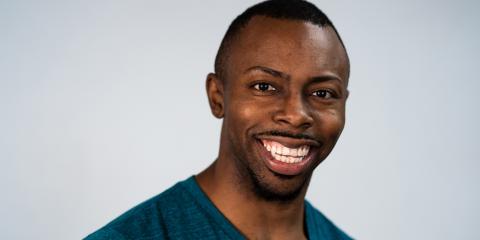Q&A with Ruka Hatua-Saar White

Dance faculty member Ruka Hatua-Saar White has a foot in both the commercial and concert dance worlds, having worked with stars such as Missy Elliott and danced with acclaimed concert dance companies Philadanco (Philadelphia Dance Company) and the Limón Dance Company. White reflects on how his work in each field informs the other, what students can expect from Boston Conservatory’s new B.F.A. focused on commercial dance, and what excites him most about the new degree.
Given that your training was primarily in contemporary dance, what led you to your work in commercial dance?
As an artist, I’ve often found that having been exposed to a multitude of dance forms has increased my marketability as a dance professional. I once danced for a contemporary ballet company called Armitage Gone! and I remember the director asking in the audition if anyone could vogue. Fortunately, I was one of few with experience in this style. Needless to say, I booked the gig! As a commercial dance artist, whether performing in industrial shows or on cruise ships, I was able to continue excelling simply because I was able to do it all. These experiences prompted me to cultivate a space for training dancers to be versatile, articulate, and creative in their training.
How does your work in each field inform the other?
My training in ballet granted me a particular rigor and ritualistic approach to the way in which I train. Strengthening and conditioning are important aspects of a dancer’s training as it provides tone, range, and kinesthetic discipline, which then prepares the body to hold space for a variety of forms. In this program, even though dancers may take ballet, our approach to classical ballet incorporates fluidity in the spine, an emphasis on improvisation within the form, and a focus on individual kinetic potentiality. In practice, dancers get to explore what it’s like to add dimensions of popping and locking to a ballet class or krumping to a contemporary class and/or rhythms of house dance to isolations in vogue.
What excites you most about the Conservatory's new commercial dance B.F.A. program?
The most exciting thing about the program is that we get to cultivate individual uniqueness. These dancers won’t be cookie-cutters, but critically thinking, well-versed, and fully realized artists of depth and dimensional range. Through this program, I’m excited to cultivate individual diversity and ingenuity.
What kind of access will commercial dance students get to industry professionals?
In addition to having the opportunity to audition for commercial agencies, which will directly connect students to jobs in music videos, industrial shows, cruise lines, and more, students will also have the chance to train and network with dancers and choreographers who are currently working in the industry. Dancers will have the opportunity to perform original choreography, but also learn iconic choreography as done by Ariana Grande, Beyoncé, and Missy Elliott to name a few, taught by their choreographers.
What skills and qualities are most important for students looking to pursue a career in commercial dance?
In commercial dance, dancers have to be able to tackle a wide variety of skills, including improvisation, acting/singing, and aerial work. Dancers must also be willing and vulnerable enough to explore their own individual quirks and uniqueness—in addition to trying new things, especially things that are outside of their comfort zone.
Learn more about Boston Conservatory at Berklee's B.F.A. in Dance: Commercial Dance.
